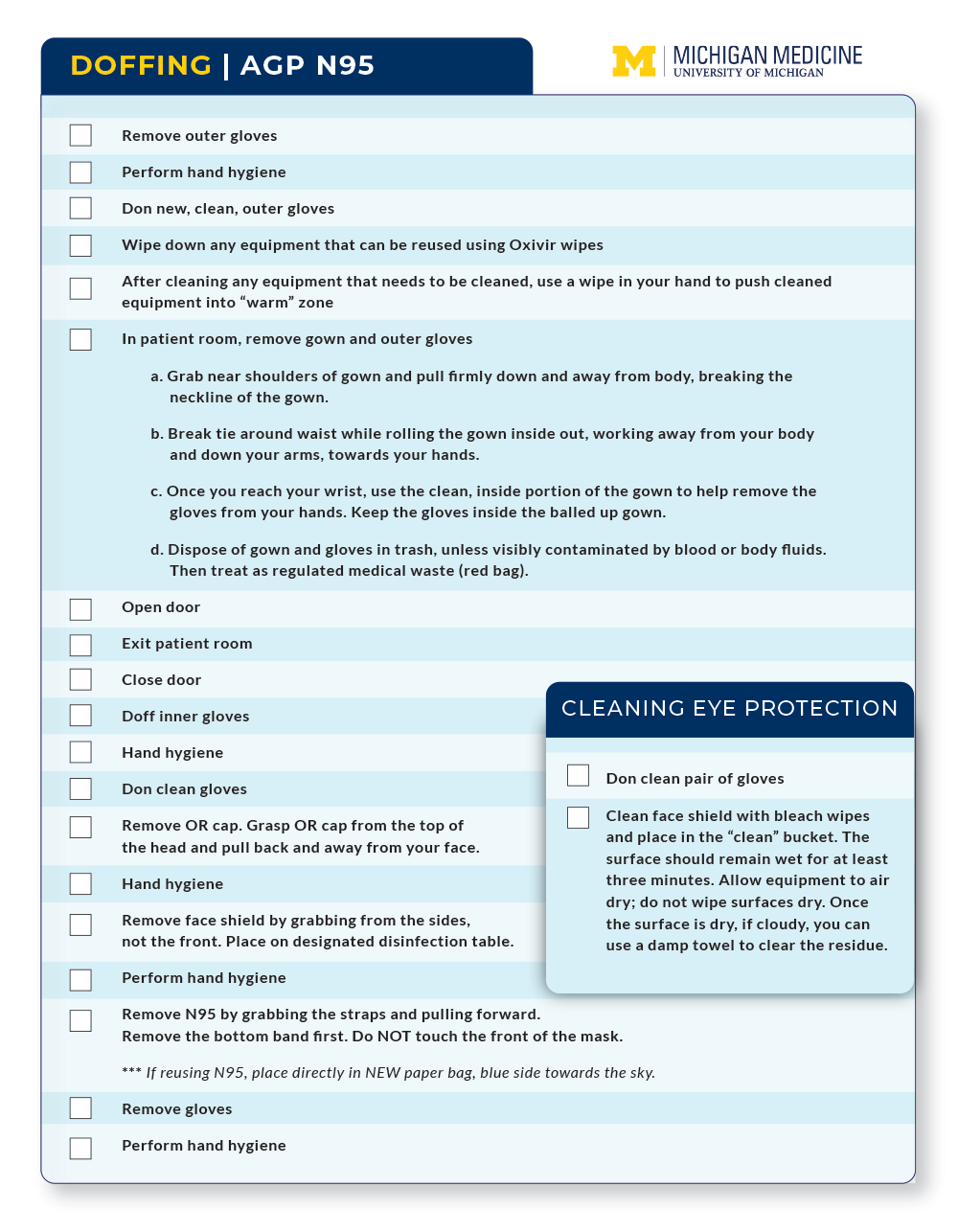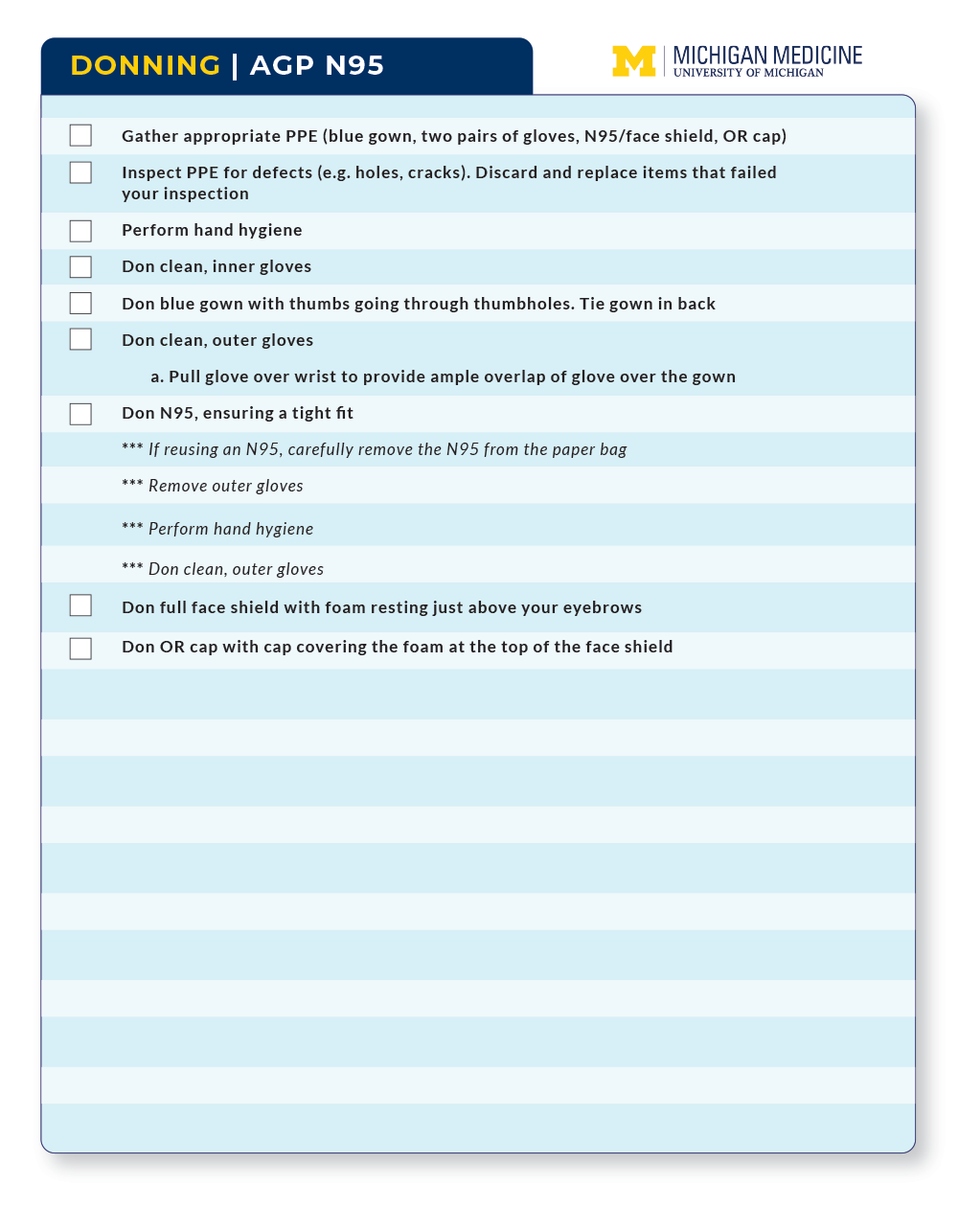Preparation and Practice Make Perfect for COVID-19 Airway Management
Michigan Medicine clinicians develop a new COVID-19 airway management algorithm that is protecting healthcare providers across the United States
Cindy H. Hsu, MD, PhD (@CHsu1012), Brendan W. Munzer, MD (@bwmunzer), and Benjamin S. Bassin, MD (@ben_bassin)
The rapid community transmission of the novel SARS-CoV2 virus (COVID-19) has led to significant incidence of acute hypoxic respiratory failure around the world. Many patients subsequently decompensate, thus requiring endotracheal intubation and mechanical ventilation. Airway management of COVID-19 patients poses significant risks to healthcare workers due to aerosolization of viral particles. A modified protocol for airway management is necessary to ensure that the procedure can be safely performed with minimal number of healthcare providers while maximizing their protection against viral transmission.
The Michigan Medicine Department of Emergency Medicine quickly recognized the need for development of a COVID-19 modified airway algorithm. We reviewed available best practices from health systems around the world that had already undergone similar challenges. We coalesced these best practices into an airway management algorithm that is highly scalable and translatable across different healthcare environments with wide ranges of resources. Our goals are to optimize patient physiology and maximize intubation first-pass success while protecting healthcare workers from disease transmission. We have paired our algorithm with high-yield infographics to enable rapid dissemination. In addition, we also created a robust in situ simulation program for our providers to practice the procedure and provide feedback. Over three weeks, our algorithm has undergone continuous refinement based on the feedback from participants in our daily simulations. We have trained almost two hundred emergency medicine physicians, nurses, respiratory therapists, pharmacists, aeromedical nurses, anesthesiologists, and intensivists with our multidisciplinary in situ simulations during this time.
Earlier versions of our COVID-19 airway algorithm have been widely circulated statewide and nationally through the Michigan College of Emergency Physicians, Michigan Emergency Department Improvement Collaborative, American College of Emergency Physicians, Michigan Critical Care Coordination Network, and other organizations. We recently heard it has even been utilized in rural Alaska.
The COVID-19 pandemic has distinguished itself not only with the rapidity of its transmission, but also with the speed of global information dissemination through social media. We are grateful to Drs. Nick Johnson (@NickJohnsonMD), Scott Weingart (@emcrit), Dan Resnick-Ault (@suturesntacos), Albert Chan (@gaseousXchange), Cliff Reid (@cliffreid), Chris Nickson (@precordialthump), the Australian and New Zealand Intensive Care Society, the Alfred ICU, and ELSO @ECMOed for inspiring us with your airway strategies from all over the world. Just like those before us had so generously shared their knowledge, we hope that others will find our airway algorithm helpful.
We are indebted to the leadership and staff of the Michigan Medicine Department of Emergency Medicine for your dedication to our patients and each other. We especially want to recognize the members of our airway algorithm team, who have been working tirelessly to refine this airway algorithm and train our job families. Team members include: Ms. Renee Havey, Drs. William Peterson, Ryan Tucker, Carrie Harvey, Eve Losman, Colman Hatton, Jessica Doan, Bella Nagappan, Nana Sefa, and Scott VanEpps. Finally, we would like to thank Dr. Kevin Ward and MCIRCC for their support, and Ms. Katelyn Murphy for her mad graphic design skills.
The first COVID-19 case in Michigan was reported on March 10th, 2020. As we write this on April 6th, 2020, there are now 15,718 COVID-19 cases and 617 related deaths in the state of Michigan. Mathematical modeling from Michigan Medicine predicts that our patient volume will exceed our hospital’s capacity by mid-April and peak during May. Challenging times are indeed still ahead us. With conviction and collaboration, we will help our patients and each other overcome this difficult time.
We will #HailToTheFrontLine.








